AAC Fair Testing Practices: Response Modes
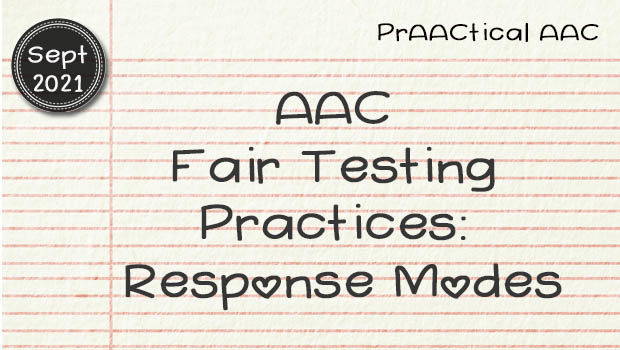
Over the past few weeks, we’ve been talking about the concept of Fair Testing Practices and how that might apply to people who use AAC. If you missed those posts, you can check them out using the links below.
In today’s post, we consider how students will respond to a number of testing situations. Teams can explore each of the topics listed below, brainstorm possible solutions, and work together to make decisions about how the student will respond with forced-choice questions, open-ended questions, and test items that require physical manipulation of test materials.
Topic 4: How will the student answer forced-choice questions, such as true/false or multiple-choice questions?
- Many AAC users can answer these types of questions the same way that their speaking peers do.
- Adjustments may be needed for individuals with fine motor difficulties, such as having them point to the desired response which is then transcribed by an aide, teacher, or therapist.
- In some cases, teams may work out unaided signals with the student so that they can respond quickly and easily. For example, a thumbs up/down gesture or gazing up/down can be used to signal true/false.
- Teams might also decide to create specific test-taking communication boards or screens on an SGD/AAC app for students to make testing easier and less fatiguing. These can be generic, as shown below, rather than geared to a specific test or quiz.
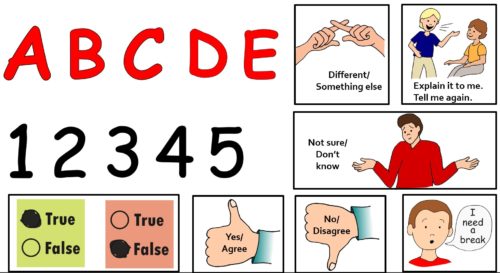
Sample communication display for testing situations
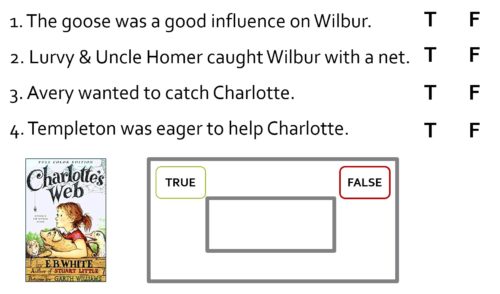
Response options can be provided on an eye gaze board.
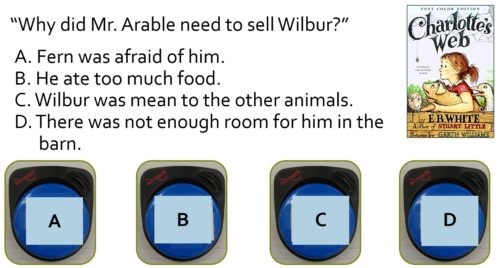
Talking switches can be set up for testing situations.
- With any new testing strategy, it is critical that the student has an opportunity to learn and practice the skills needed well in advance of the testing situation.
Topic 5: How will the student answer open-ended questions, such as fill-in-the-blank or short essays?
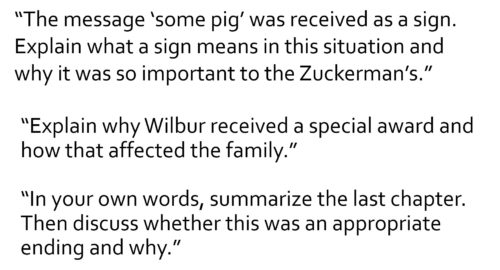
Students who are still learning to use AAC may need creative solutions to help them answer test questions like these.
- Constructed responses, such as answering an open-ended question, can be answered with the individual’s unaided communication strategies (e.g., signs, residual speech) and aided communication (e.g., SGD, AAC app). Teams will want to consider the vocabulary demands of the specific test/quiz and ensure that the relevant words are available and accessible to the student. Word and sentence banks, such as in the examples below, are sometimes used to support students in these instances.
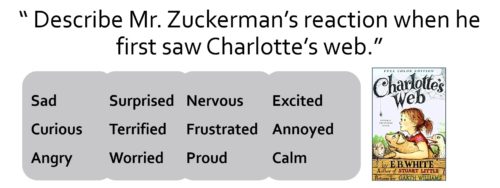
In this example, the student is provided with a word bank to use in constructing their response.
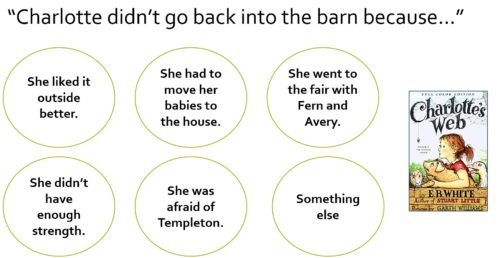
In some cases, teams may decide to offer an array of sentences to choose from rather than have the student construct their response word-by-word.
- For essays and longer passages, teams may want to consider things that make the writing or dictating process easier and faster for the student. The use of prestored messages and sentence fragments (e.g., in the beginning…; another important point is…; in conclusion, I think…) can be helpful in some instances.
- Teams will also need to determine whether the student will complete the assessment independently or if a scribe or other resource will be needed.
Topic 6: How will the student respond when the manipulation of objects/materials is needed?
- On rare occasions, students may need to participate in assessments that require toys, common objects, or other items to be handled or moved. For many AAC users, this does not require any changes.
- Students who are unable to manipulate objects can use their AAC systems to direct the actions of another person (e.g., Pick up the one that I am looking at. Move it to the other side).
- Some assessments require students to draw or sketch diagrams to answer the question.
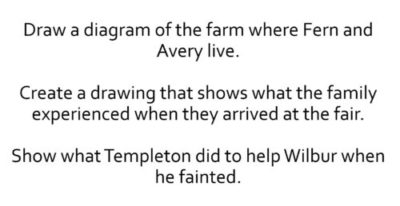
To address questions like these, some students may need access to (and instruction) in additional assistive technology that allows them to draw on a digital canvas.
By discussing the students’ needs and abilities, teams can consider these available options and make thoughtful decisions about how to proceed. It’s important to acknowledge that some changes to the standard ways that tests/quizzes are administered alter the validity of the assessment in very significant ways. For example, changing a sentence completion item from a fully constructed response to a multiple-choice question changes the nature of the question. In a perfect world, it would be ideal to have the student complete the sentence without the benefit of response options but this is not feasible in all cases. Thus, teams often try to make the fewest number of changes needed that allow students a fair chance to demonstrate their knowledge and skills.
Whenever alternate response options are used, the team should carefully document what changes were made and why those were made. This transparency is important in interpreting test results, but also to replicate the procedures in future testing.
In the next post in this series, we’ll discuss how characteristics of the assessor and the test environment might impact performance, and share some guiding questions for discussion on how to address these challenges.
Filed under: Featured Posts, PrAACtical Thinking
This post was written by Carole Zangari
